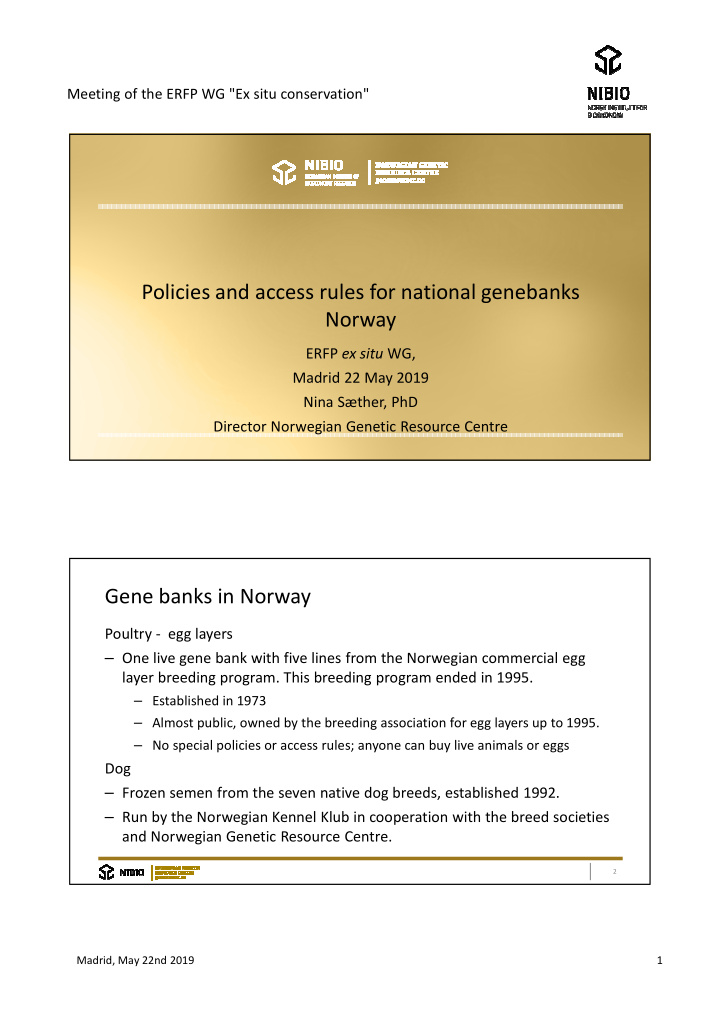



Meeting of the ERFP WG "Ex situ conservation" Policies and access rules for national genebanks Norway ERFP ex situ WG, Madrid 22 May 2019 Nina Sæther, PhD Director Norwegian Genetic Resource Centre Gene banks in Norway Poultry - egg layers – One live gene bank with five lines from the Norwegian commercial egg layer breeding program. This breeding program ended in 1995. – Established in 1973 – Almost public, owned by the breeding association for egg layers up to 1995. – No special policies or access rules; anyone can buy live animals or eggs Dog – Frozen semen from the seven native dog breeds, established 1992. – Run by the Norwegian Kennel Klub in cooperation with the breed societies and Norwegian Genetic Resource Centre. 2 Madrid, May 22nd 2019 1
Meeting of the ERFP WG "Ex situ conservation" Storage of frozen semen from bulls – No “public” gene bank, that is; not formally «authorized» in accordance with EUGENA – Owned and run by Geno, breeding association for Norwegian Red Cattle = farmers’ cooperative. Geno covers all costs. – Every year 1-3 bulls of each of the native endangered breeds are included in the gene bank, apr 1000 dozes per bull. – Breed societies and Norwegian Genetic Resource Centre, nominate rams/bucks. – Semen stored from appr 50 bulls of each of the six endangered native breeds. 3 Gene bank of frozen semen from bucks and rams – No “public” gene bank, that is; not formally «authorized» in accordance with EUGENA – Owned and run by Norwegian Sheep and Goat association, breeding cooperative, owned by the farmers, for Norwegian sheep and goat breeds. – The costs are mainly covered by Norwegian Sheep and Goat association, some support from public money. – Every year 1-3 rams of each of the native endangered breeds are included in the gene bank. – Breed societies and Norwegian Genetic Resource Centre, nominate rams/bucks to the gene bank. 4 Madrid, May 22nd 2019 2
Meeting of the ERFP WG "Ex situ conservation" Terms of delivery for semen = the same as for the commercial breeds – “Semen and embryo delivered by Geno must not be disposed further. – Animals that are inseminated with NRF-semen must not be sold to parties that are conducting, or have the intention to conduct, activities that compete with Geno. – Offspring after insemination with semen or embryo from NRF, must only be used in own production or sold as part of domestic live cattle sale or by agreement with Geno. – If NRF-semen/embryo/animals are disposed in conflict with this clause, the person concerned loses its’ right to buy semen or embryo of NRF.” 5 Thank you for your attention! Madrid, May 22nd 2019 3
Meeting of the ERFP WG "Ex situ conservation" 8 Madrid, May 22nd 2019 4
Recommend
More recommend